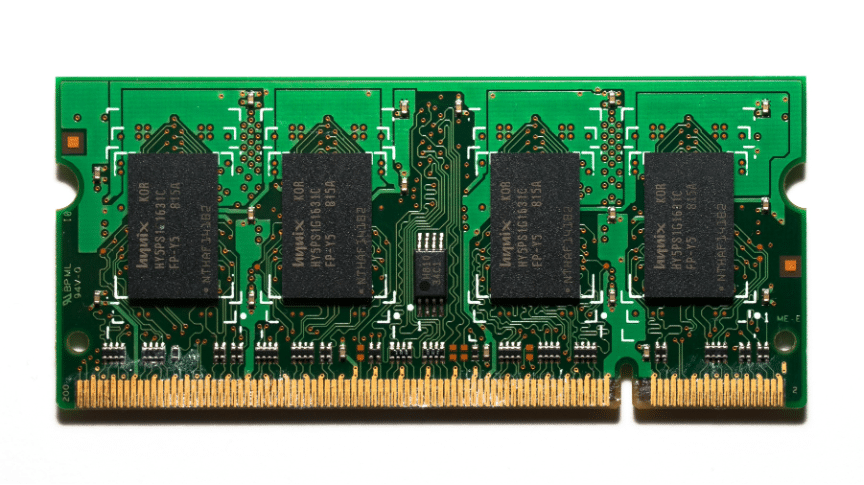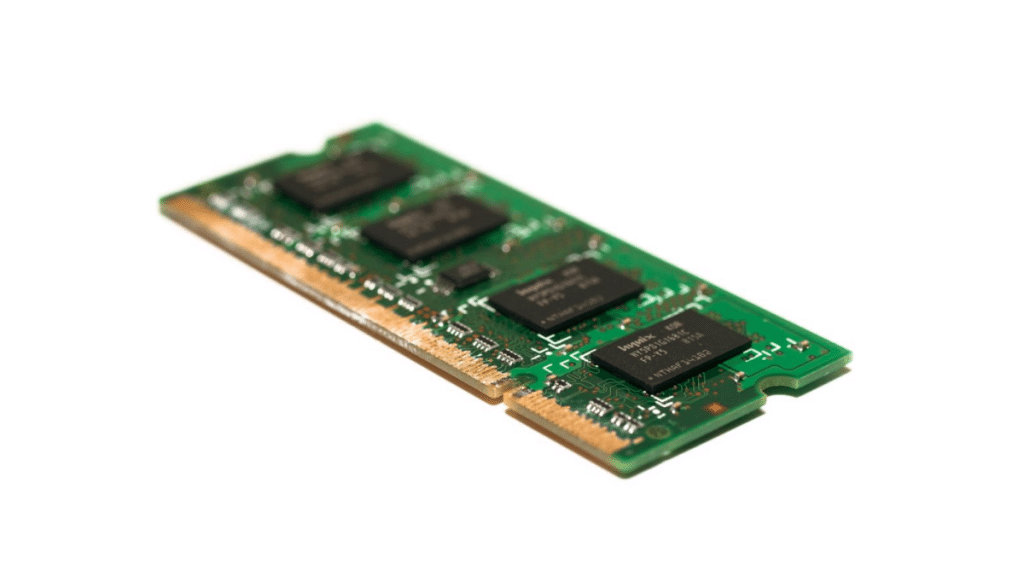The role of memories in the ever-evolving landscape of artificial intelligence should not be looked down upon. They can be compared to the spine in data-intensive AI systems, enabling complex computation and data processing.
This article will look at two prominent types of memories, namely DDR vs. GDDR. By understanding the difference between DDR and GDDR, you can better understand their role in the development of AI and ML technologies, which further helps you choose the right version to optimize system performance.
DDR vs. GDDR: DDR Memory Explained
1. What is a DDR Memory?
DDR, or in its full name, Double Data Rate, is a kind of SDRAM (Synchronous Dynamic Random Access Memory) that supports the function of CPUs (Central Processing Units). The DDR memory allows for dual data transfer per clock cycle, which makes significant progress over the previous traditional SDRAM technology.
As technology advances, there are various types of DDR memories, ranging from DDR1, introduced in the late 1990s, to DDR6, expected to launch in 2025. DDR1, DDR2, and even DDR3 memory modules may be obsolete now. At the same time, DDR4 and DDR5 are more popular due to higher data rates and lower power consumption.
Especially, DDR5 memory modules, released in the early 2020s, are expected to significantly impact future electronic advancements like artificial intelligence and machine learning.
2. Benefits of the DDR Memory
- Increased Data Transfer Rates
The data transfer on both the rising and falling edges of the clock signal enables DDR memory to double the data transfer rate. This is really helpful for those applications that require faster data processing, such as AI algorithms, which need to quickly access and manipulate large datasets.
- Energy Efficiency
Each new DDR iteration comes with new enhancements, among which the lower voltage requirements play a significant role in consuming less energy and generating less heat. This is vital for AI applications since, most often, these systems continuously keep running, demanding efficient power management to make it sustainable and economical.
- Higher Memory Capacity
Each DDR version has its respective capacity specifications. The earliest DDR1 has a maximum capacity of 1 GB, while GDDR5 can reach up to 128 GB in capacity. AI applications benefit enormously from this increased capacity to handle intensive data and complex computation tasks more efficiently.
3. Applications of DDR Memory
DDR memories are widely applied in computing systems like desktops and servers. Advanced DDR types like DDR4 can be found in high-performance computing and gaming systems.
In addition to the above common applications, they also find applications in different scenarios like automotive electronic systems. Furthermore, leading DDR memories are needed for AI training models due to their increased bandwidth and lower latency.
DDR vs. GDDR: GDDR Memory Explained
1. What is a GDDR Memory?
GDDR, or technically GDDR SDRAM, is short for Graphic Double Data Rate memory. It is designed based on the DDR technology, specifically for handling fast and complex graphics rendering tasks thrown up by GPUs (Graphics Processing Units).
It should be noted that GDDR versions are not numerically aligned with DDR. For instance, GDDR2 and GDDR3 are built based on DDR2 chips, and GDDR4 and GDDR5 are based on DDR3. Some GDDR6 chip examples are the MT61 series from Micron Technology. As of 2024, the latest GDDR memory is GDDR7, designed for next-generation gaming, artificial intelligence, and performance-intensive computing.
2. Benefits of the GDDR Memory
- High Bandwidth
The difference between GDDR and DDR mainly lies in that GDDR memory has a much higher bandwidth compared to DDR memory because of its wider memory bus.
This high bandwidth is especially required in AI and ML applications that require a lot of data processing and speed, such as deep learning models that involve large volumes of visual data.
- Better Performance
It is designed with GDDR memory architecture, facilitating faster access time and lower latency, which simply means better overall performance. Better, GDDR memories can offer higher maximum memory capacity compared to DDR memories.
3. Applications of GDDR Memory
GDDR memory is highly suitable for AI and ML applications that involve extensive graphics processing and data-intensive computations. For example, in computer vision tasks, GDDR memory efficiently processes high-resolution images and videos, enabling AI models to make correct object detection and recognition. Some other applications include gaming, 3D modeling, and computer-aided design (CAD).
Comparison of DDR vs. GDDR: Which is Right for You?
The difference between DDR and GDDR memories makes them ideal for performing different data processing tasks. High-capacity DDR memories are critical for the smooth function of memory-intensive AI data centers, while high-bandwidth GDDR memories, with optimized architecture, are crucial for artificial intelligence and machine learning applications.

In both cases, using real and original components becomes highly essential to ensure the whole system’s reliability and compatibility. You will need a reliable distributor partner for authentic and brand-new component needs. Here, UniBetter can be a trustworthy electronic component distributor to cooperate with.
This distributor can source electronic components from 7,000+ reliable suppliers, including Micron Technology, which leads in offering cutting-edge memory solutions. You can rest assured of their component authenticity and quality with their comprehensive CSD quality management system. Further, UniBetter features offering cost-effective procurement solutions with 30+ experienced sourcing experts.
By working with this industry-leading electronic part distributor, it is promising to have the best component procurement solutions that ensure both quality and cost-effectiveness!
Conclusion
To sum up, understanding DDR vs. GDDR memory is paramount in optimizing AI system performance, and the key to success is having the right lead-edge components. By working with reliable distributors like UniBetter, AI developers can create robust and high-achieving systems that further drive innovation and advancement in the field of artificial intelligence.
To boost your projects’ development, it is highly recommended to contact UniBetter if you are looking for reliable and competitively priced memory solutions!
